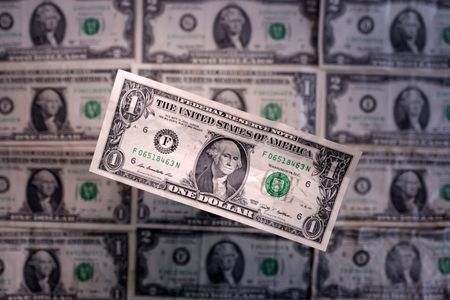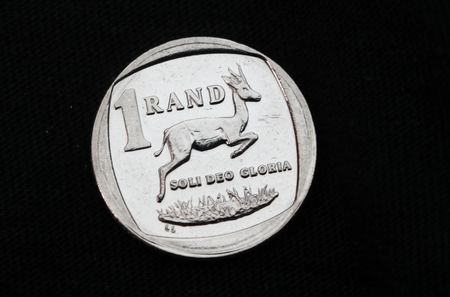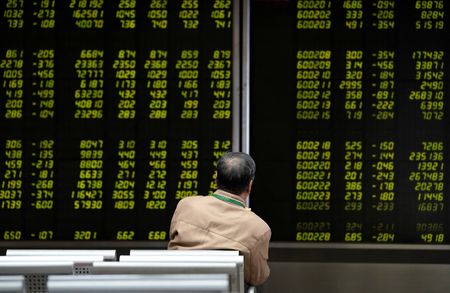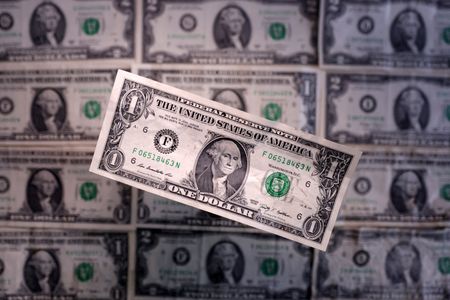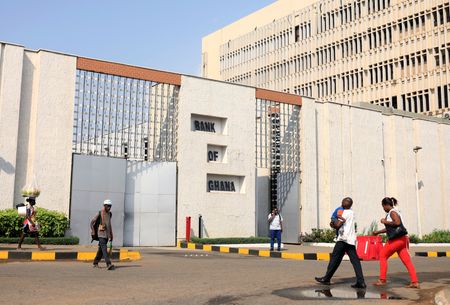By Kevin Buckland
TOKYO (Reuters) – The U.S. dollar ticked higher on Thursday following its plunge to a 3-1/2-year low and then forceful rebound as traders grappled with the ramifications of the Federal Reserve’s measured stance on further interest rate cuts.
New Zealand’s dollar tumbled after data showed the country’s economy shrank far more than expected in the second quarter, fuelling bets of steeper rate cuts this year. The Aussie dollar also weakened after the Australian employment unexpectedly declined in August.
The Fed reduced rates by a quarter point on Wednesday, as expected, and indicated it will steadily lower borrowing costs for the rest of this year. Fed Chair Jerome Powell characterised the day’s policy action as a risk-management cut in response to the weakening labour market, but said the central bank does not need to rush easing.
The dollar dropped to the lowest since February 2022 at 96.224 against a basket of major peers immediately after the rate decision, but sprang back vigorously to be as much as 0.44% higher on the day at 97.074. It continued that climb on Thursday to stand at 97.163.
The Fed’s closely watched dot plot of policy expectations predicted a median 50 basis points of additional cuts over the remaining two policy meetings of this year, but only one additional reduction in 2026.
“The revised forecasts highlighted the degree of uncertainty that remains over the outlook,” said Elliot Clarke, head of international economics at Westpac.
“The timing and scale of the forecast rate cuts also point to lingering risks for inflation.”
The euro slipped 0.2% to $1.1791, after a round trip to the highest since June 2021 at $1.19185 on Wednesday in a knee-jerk reaction to the Fed announcement.
Sterling eased 0.2% to $1.3604 after briefly leaping to the highest since July 2 at $1.3726 in the prior session.
The Bank of England announces its own policy decision later on Thursday, and is widely anticipated to keep rates at 4%.
Official figures on Wednesday showed British inflation at an annual 3.8% in August, reinforcing market expectations that further rate cuts are unlikely to be imminent.
Economists polled by Reuters earlier this month expect one more rate cut by the end of the year.
YEN SLIPS AHEAD OF BOJ RATE DECISION
The dollar advanced 0.2% to 147.245 yen in the latest session, after weakening as much as 0.67% to the lowest since July 7 at 145.495 yen overnight before slingshotting back.
The Bank of Japan is widely expected to refrain from hiking rates on Friday, although markets price in a quarter-point increase by end-March, with about 50% odds of it happening within this year.
The spotlight is on an October 4 vote where the ruling Liberal Democratic Party will elect a new leader to replace outgoing Prime Minister Shigeru Ishiba, who is stepping down following a bruising defeat in upper house elections.
New Zealand’s dollar weakened 0.9% to $0.5909, the lowest level since September 8.
Data on Thursday showed gross domestic product (GDP) fell 0.9% in the second quarter from the prior quarter, worse than analysts’ and the Reserve Bank of New Zealand’s forecasts of a 0.3% fall.
Westpac changed its call for the RBNZ’s meeting next month to a half-point cut from a quarter-point reduction.
The Aussie dollar declined 0.4% to $0.6628 after official figures showed net employment fell by 5,400 in August on a month-on-month basis, compared with market forecasts of a 21,500 gain.
The greenback added 0.1% to C$1.3790 after the Bank of Canada on Wednesday cut rates by a quarter point to a three-year low, as expected, citing a weak jobs market and less concern about underlying pressures on inflation.
(Reporting by Kevin Buckland; Editing by Sonali Paul)

